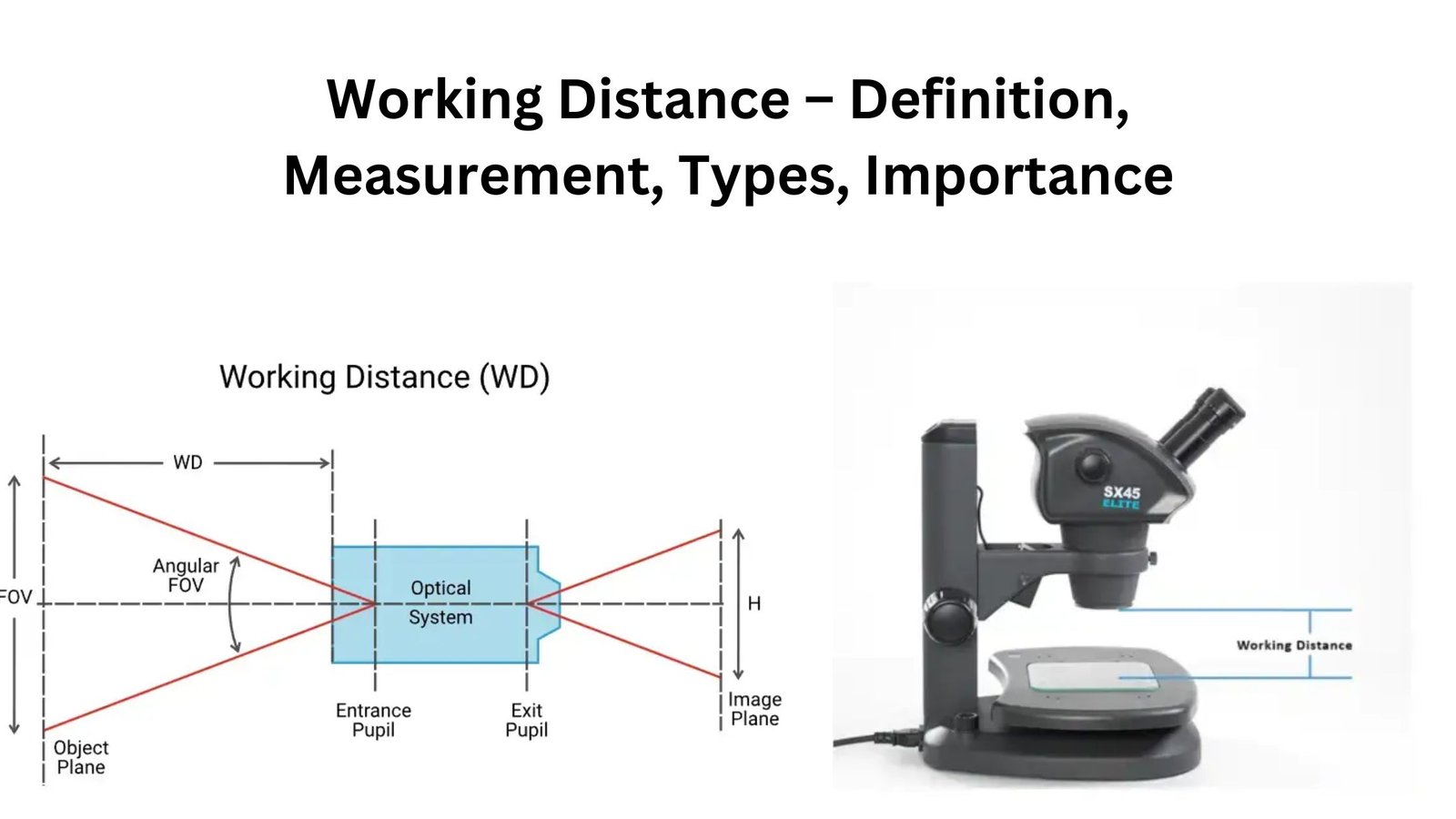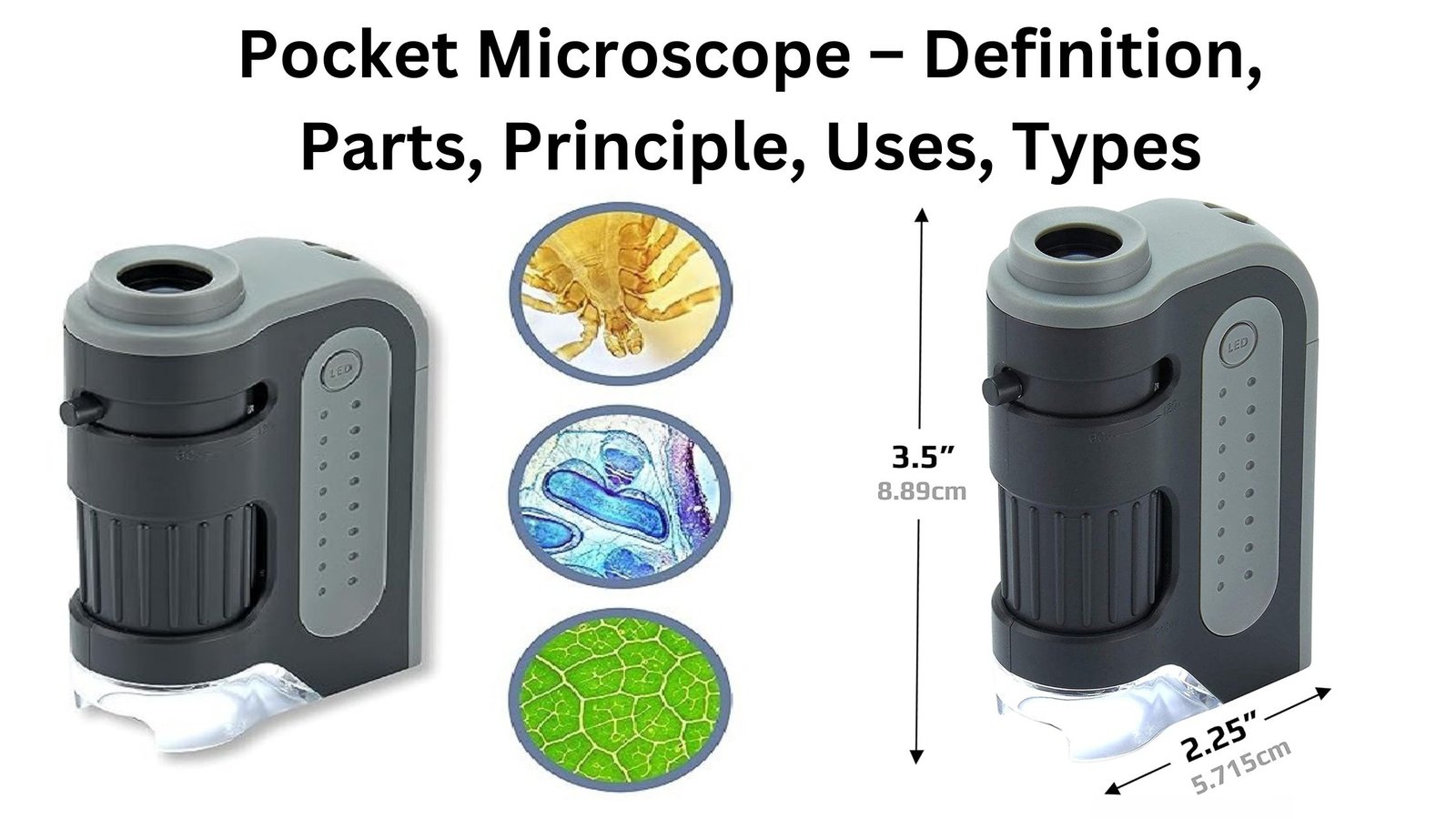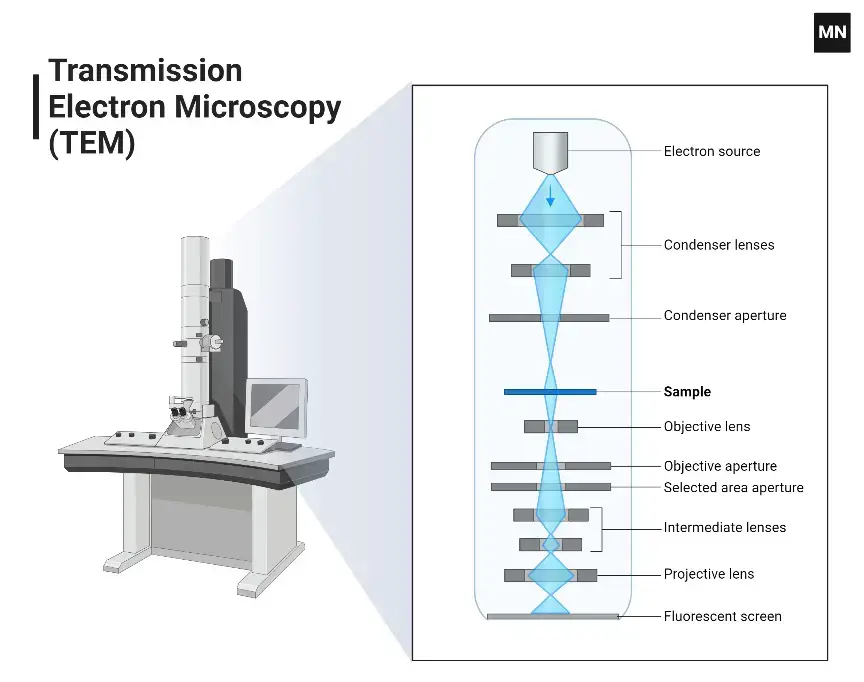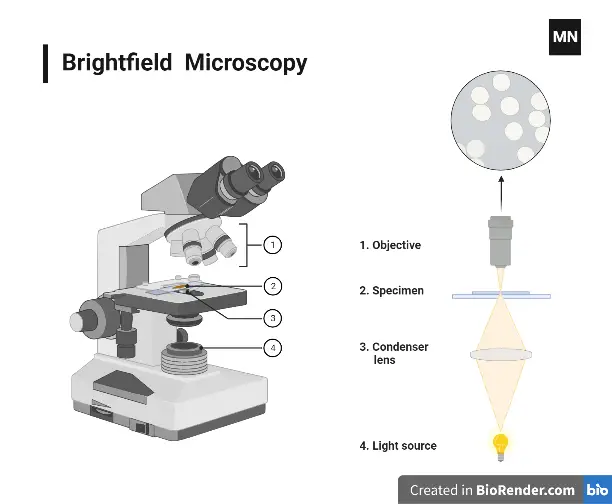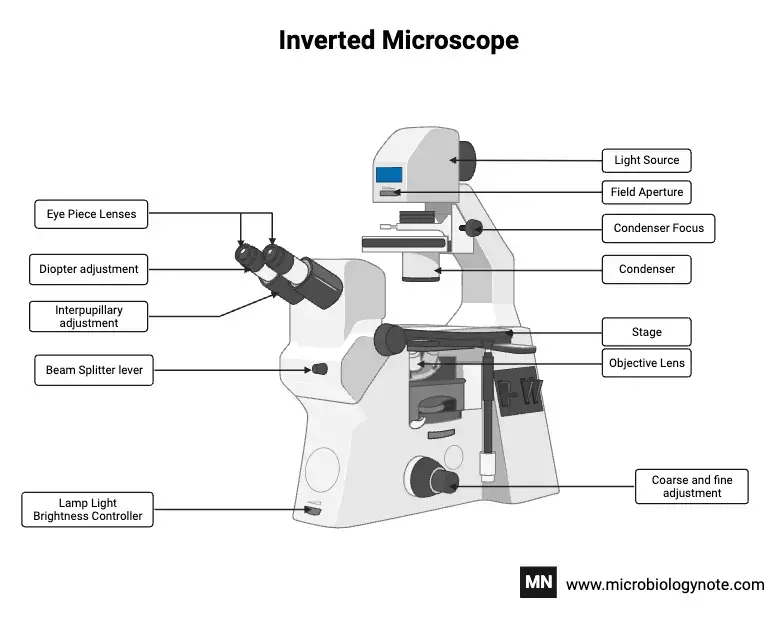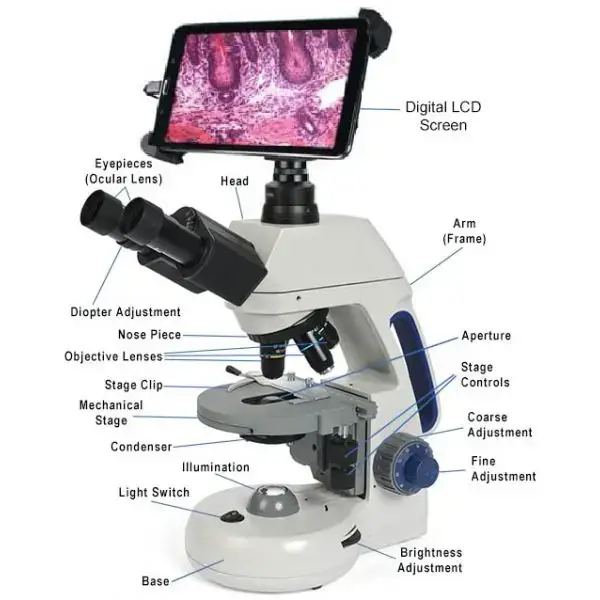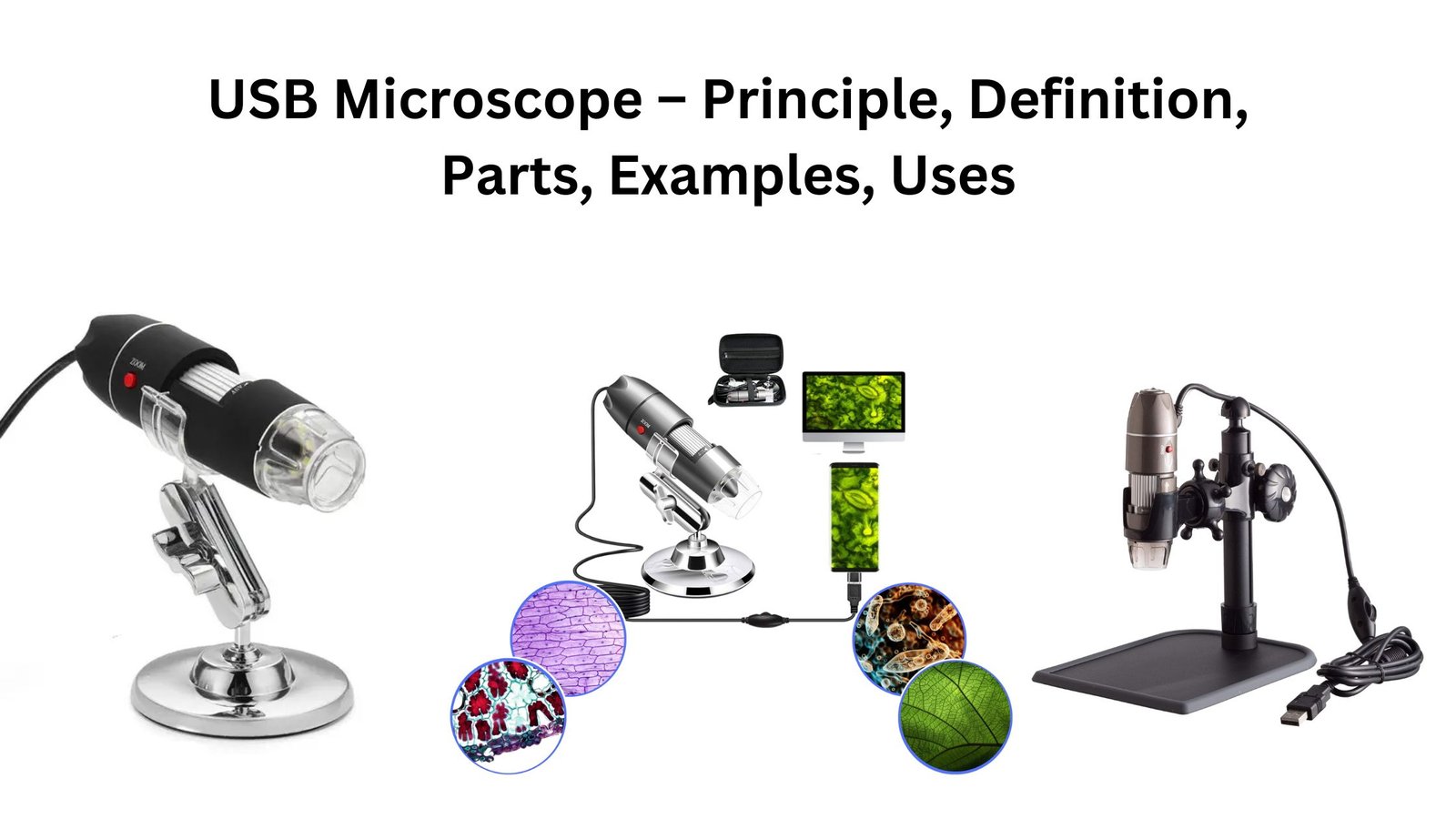 Sourav Pan
Sourav Pan
Working Distance – Definition, Measurement, Types, Importance
What is Working Distance? In optics and microscopy, working distance—a fundamental idea—is the empty space between the object of view and the front surface of the lens or lenses in a microscope. Measuring in millimetres (mm), this distance greatly influences our perspective of objects under microscopes. Consider yourself examining little items under a microscope. Between … Read more
Pocket Microscope – Definition, Parts, Principle, Uses, Types
What is a Pocket Microscope? A pocket microscope is a compact optical instrument that professionals and hobbyists alike can utilise. These microscopes– which are specifically engineered to be portable, feature a diminutive form factor that makes them truly pocket-sized, though certain models are marginally larger. Like most microscopes, they incorporate a small platform for specimen … Read more
Polarizing Microscopes – Principle, Definition, Parts, Applications
What is Polarizing Microscope? Polarizing microscopes, also called petrographic microscopes, are specialized optical instruments designed for the examination of specimens that display birefringence—materials that divide light into two rays that propagate at different velocities. This unique property allows scientists to study the optical properties of anisotropic substances, which have properties that depend on direction. But … Read more
How are samples prepared for a transmission electron microscope?
A TEM is an extremely advanced tool that uses a beam of electrons to look at and study the inside structure of thin samples at an extremely high detail. Unlike light microscopes, which use visible light, TEMs use the shorter wavelength of electrons to get magnifications that can be millions of times bigger. Here’s a … Read more
Light Microscope – Labeled Diagram, Definition, Principle, Types, Parts, Applications
The light microscope is a very useful tool in the field of science. That kind of tool that, even though it seems easy, lets us see a whole new world. Using visible light to magnify small objects, this microscope lets us peer into realms far beyond what our eyes can naturally see. We would not … Read more
Inverted Microscope- Definition, Principle, Parts, Labeled Diagram, Uses, Worksheet
An inverted microscope is a special type of microscope. It doesn’t resemble other regular microscopes, as the light source and condenser point upward to shine directly downwards onto the specimen stage. The objective lenses, along with the turret, face up from below the stage. In other regular upright microscopes, the stages have objectives facing up … Read more
Digital Microscope – Principle, Parts, Application, Advantages
A digital microscope is a brilliant optical innovation, fundamentally distinguished from a normal microscope simply because it does not employ any eyepiece. The digital microscope uses a digital camera as its image detector and projects the images onto a computer monitor or screen. The entire process eliminates human interaction with the optical system; all the … Read more
USB Microscope – Principle, Definition, Parts, Examples, Uses
What is a USB Microscope? USB microscopes are digital microscopes that link to computers via USB. Its low power makes it suited for educational and hobbyist use. This microscope magnifies pictures on a computer screen, unlike regular microscopes. Webcams with high-powered macro lenses are common in USB microscopes. This lens allows users to zoom in … Read more
Atomic Force Microscope (AFM) – Definition, Principle, Application
An Atomic Force Microscope, often known as an AFM, is a highly advanced tool that gives researchers the ability to view surfaces on a nanoscale scale. In contrast to conventional optical microscopes, which are constrained by the diffraction of light, atomic force microscopes (AFMs) are able to attain resolutions that are as low as fractions … Read more
